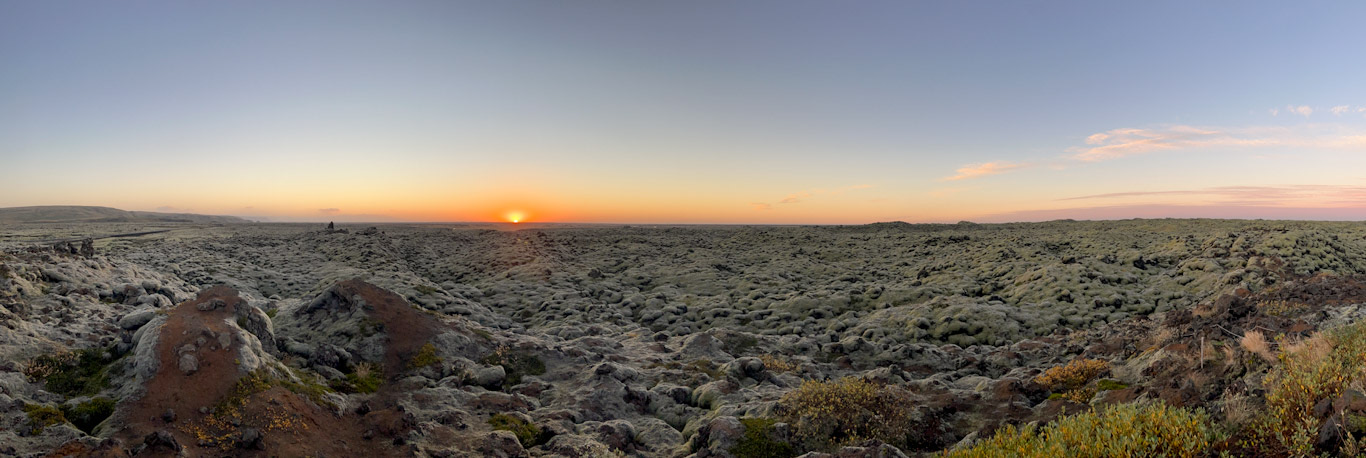Not only that, but SP500 pays dividends practically every year, whereas gold costs money to store securely. $15M in SP500 would have netting something around $300k last year in dividends alone.
Overzeetop
- 0 Posts
- 81 Comments

 6·6 months ago
6·6 months agoSolid fuel for rockets burns relatively slowly at 1 atm and in solid form, much like a flare, though still faster than I would expect you’d want for a hot pot unless these were a hybrid (so no oxidizer in the pellets, just a solid fuel source like modified PVC, with a separate oxidizer like nitrous oxide). The water was replacing the jet fuel, which - assuming it was similar to Jet A - is basically kerosene. Though I’d be worried what modifiers or stabilizers were used for a green flame if I were cooking over it. I’ve made green flames with boric acid and methanol for Halloween decorations (outdoor, of course), but who knows what is causing it in their fuel.
A Bell, Book, and Chicken in a Hatbox
I mean, that’s a weird-ass AI prompt. But if fascism wins and you voted third party, yes - it’s partly* your fault unless you’re too stupid to understand how first past the post voting works.
*conditionals against massive fascist party majority states notwithstanding.

 8·7 months ago
8·7 months agomaybe get a few of those potatoes up front
It’s good to see such unbridled optimism in these dark times.

 72·7 months ago
72·7 months agoIf you call for a dick measuring contest, you don’t let it be in public if you know you’re going to lose.

From a technical perspective, this is why a colder than average winter will affect (air-source) electric heat pumps more than resistance or fuel sourced heat. As the outside temps go down, the efficiency decreases in a heat pump, so the curve is non-linear. For electric resistance and fuels, the outdoor temperature has a near zero effect, making the increase in cost linear.
Not that it matters too much. Electricity costs in most of the US are relatively stable whereas fuel costs can swing by a factor of five or more from year to year ($2/MMBTU to over $12/MMBTU in the last decade). Oil doesn’t play much into heating anymore, but it can also swing by more than a factor of two (From a low of $2/gal to over $5/gal in the last decade). Electric, though, is up by 25% over the last decade (on average) and varies by less than a a couple percent from year to year, slowly increasing at around a 2% average rate.
It took me searching the blacks to notice. Where I play there’s usually enough glare I wouldn’t get good blacks if you swapped the LC layer for vantablack.

 151·7 months ago
151·7 months agoItemized invoice:
Fan $ 7
Design & overhead to incorporate fan into design $ 13
Value of increased performance, as judged by the accounting department $480

 11·8 months ago
11·8 months agoCCRC buy-ins/contracts are for life. I used to design the buildings for them, I still do design work on existing facilities. I’ve also gone over a contract with my own parents. You essentially pay full price for a residential “unit” and as you require more care you are moved, without additional cost, into a higher care location. The owners than re-“sell” your previous unit to the next resident. When you die, there is no equity that your heirs will receive - in that way it’s like a lease. The contract is for life with an annual escalation for maintenance and service.

 0·8 months ago
0·8 months agoOkay - you lease a car that includes gasoline and all maintenance. The agreement is that you get to drive it until you die. You pay $80,000 up front for the car and $100/mo for the maintenance, which can increase per the lease. You go along for 4-5 years, and each year your maintenance increases, maybe to $130/mo today, because of the cost of gas and parts needed. You can leave at any time, but if you ever leave or die, you don’t get to keep the car - it still technically belongs to the leaseholder. You forfeit the $80k.
Well, the company sold and the new owners can’t find enough people with $80k lying around to buy in, so they decided they’ll just change the model to include the cost o the car - and charge $650/mo for the service. You get a letter that at your next annual increase, the monthly fee is going to from $130 to $650 because they’ve changed what constitutes “maintenance” as part of their terms and conditions. You can either stay with the package and pay $650/mo or you can leave and have no money to go find a new car. Oh, and you have no job and are on a fixed income because you’re 75 years old.

 21·8 months ago
21·8 months agoFrom the article it sound like there was no maintenance escalation clause limitation - they bought in for, say, $750,000 with a payment of $1000/month in fees, per their contract. Each year the contract maintenance increases (since costs increase) and it had gone up to ~$1300…then, all of a sudden, the owner decided that they weren’t getting enough people with $750k to drop up front and added a $6.5k/month option with little or no buy in. When these residents rolled to their annual renewal, instead of the normal 3-6% increase, they were “upgraded” to the new rental-based prices - $6.5k.mo. Their contract is still valid, and they can still stay there, but based on the lawyers these people have gone to about the increase, it’s all 100% legal because there is no limit in the contract on how much the fee can increase.

 25·8 months ago
25·8 months agoThe article makes it sound like someone bought the place and jacked up the monthly maintenance fee by $5000 just because “fuck you.”
Well, given that they bought in under the lump-sum + maintenance model and have somehow been “upgraded” to the rental model, that’s exactly what happened. It would be like buying a home and then the old owner coming back and saying, “you know what, I could get more money renting this place - you have to pay rent now.” These people likely sold their house and used that money to buy into the community - essentially paying for the right to use the building until they die. It’s common in CCRC facilities (continuing care retirement community). You essentially pay for the plant and then pay maintenance, and they guarantee that they will have a spot for you in their care facility as you need more assistance (Independent living -> Assisted Living -> Nursing and/or Memory Care - Hospice). It’s much like a reverse mortgage in that you “buy” your “home” and get to live in it until you die, at which point the deed is turned over with your heirs getting nothing. Except that in this case you don’t get a monthly payment; instead you pay a fee for the facility services which is free of a rent cost. As you move up in care, the fee gets larger to cover the additional services (additional meals, personal assistance, and ultimately nursing care), but it’s just for utilities and services - your payment covers the physical buildings. As you move up, people behind you buy in and that money is used for (CEO bonuses) maintenance and updates to the buildings. Many of these are “non-profits” so the extra money technically isn’t for profit, but there are lots of corporate mouths to feed in CCRCs and they find ways to distribute the money.

 243·8 months ago
243·8 months agoThose are people who actually voted in the off-year election, not people whos view or registration. https://www.statista.com/statistics/319068/party-identification-in-the-united-states-by-generation/ shows that those in Gen x and above (43 year old an above) Republicans have a ~10% margin over Democrats. Even Pew agrees that Party or Leans-Party favors Republicans in the over 50 group by roughly the same margin https://www.pewresearch.org/politics/2020/06/02/the-changing-composition-of-the-electorate-and-partisan-coalitions/

 1·8 months ago
1·8 months agoMy only reason to believe that is not what is happening is that China, and the Chinese, are too smart to using coal as a peaking or emergency source of power. The only thing worse than coal for peaking is nuclear. Oil, Gas, and hydro are all much better for short-to-mid term peaking and batteries - something they’re very good at and have vast resources for - are perfect for short term emergency/failover loads. I believe (without documentation) that they are building extra capacity for the possibility of another expansion - the incubation of so many “third world” economies and partnerships across Asia and Africa to spur demand for their domestic production. If they don’t use it, it was a jobs program; if they find they need it, they will accept short term cash and economic power for a worsening of the world environment. In a way, the largest communist country on earth is also the largest capitalist power. Ironic.

 2·8 months ago
2·8 months agohis past year, China couldn’t run their hydro at peak capacity because of a drought.
Well, yes. The simple facts we have are that fossil fuel use is up. What happens next year will be speculation, but what we know is that they are using more coal this year, and they are hedging their future bets by building out their coal generation capacity. So if climate change means a further drop in hydro output, or more cloud cover where they install solar, or they need to make more power than they’re installing because the world wants more steel (I’m in the building industry and steel supply is still a bit tight) - they can start belching out a massive amount of CO2.
Only time will tell - and I hope you turn out to be the one who is right :-)

 2·8 months ago
2·8 months agoChina has increased their coal generation in terms of absolute GW, and increase the coal usage per GW this year. I’m not sure where your data is from. Here’s mine:
“China’s CO2 emissions have seen explosive growth over recent decades, pausing only for brief periods due to cyclical shocks.” and “…CO2 is rebounding in 2023 from zero-Covid lows (see: Why emissions grew in Q3 of 2023)…”
both from a link in the original posted article, https://www.carbonbrief.org/analysis-chinas-emissions-set-to-fall-in-2024-after-record-growth-in-clean-energy/
“Domestic coal output tonnage has continued to grow in 2023, following the steep increase in 2022 resulting from government efforts to boost output. However, coal quality has declined, resulting in a much smaller increase in energy supply from domestic coal. Poor quality of coal supplied has also pushed users to shift to imported coal for blending, the result being a record surge in imports.”
https://energyandcleanair.org/china-energy-and-emissions-trends-june-snapshot
The analysis points to a reduction in 2024, but that is speculation. What is clear is that 2023 is higher. And if the Chinese economy should pick back up and steel and concrete production come back up to recent historic levels, the CO2 is definitely going go continue to go up for a while. They’re bringing renewables online, yes, but if we look at what is actually happening the CO2 is currently increasing. Both of us would be speculating beyond that.

 1·8 months ago
1·8 months agoThat says nothing about reducing total energy output, though. They’re only talking about paying back installation costs for additional capacity. Adding 50% more capacity and then running everything at 80%, for example, still means burning more coal and making more power. And, often, running a plant at below optimal will decrease it’s efficiency, leading to a higher CO2 load for every kWh. It’s an incentive for growth and surplus capacity, not an incentive to lower carbon emissions.

 3·8 months ago
3·8 months agoI presume “decline” is used in the percentage sense and not the absolute sense. If the total power amount of carbon-based fuel generation plants is increasing, and the fuel is coal ©, then the carbon emissions must go up in an absolute sense. But the rapid deployment of non-carbon fuel power sources are increasing faster than the the carbon based, so percentage will go down. Am I reading this wrong?
Also, in a linked article: "And, as Myllyvirta highlights, numbers in the communique stating that coal consumption rose 4.3% in 2022 and total energy use rising 2.9% “appear to contradict weak or falling industrial output”
So consumption of coal - the most carbon-producing fuel - rose in 2022, and according to this article their energy consumption jumped again after Covid restrictions were lifted this year. Renewable installation is rising faster than carbon installation (280GW installed this year vs 136GW of coal “under construction”). The data given in these articles seems intentionally inconsistent, from annual installation (only given for renewable) to total capacity (only given for future Coal). One has to wonder if The Guardian is running their articles through some kind of Donald Trump AI filter to ensure that no verifiable content gets printed.




See Also: Apple Vision users after playing Fruit Ninja for the first time.